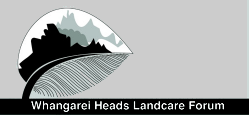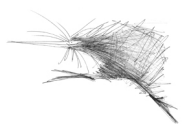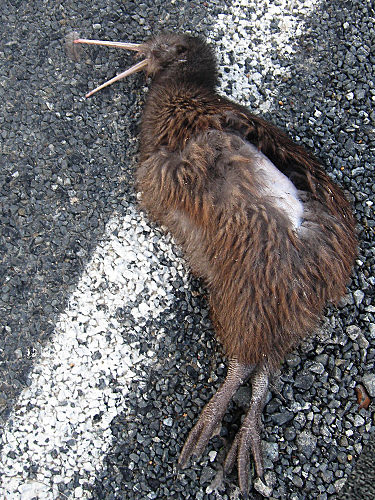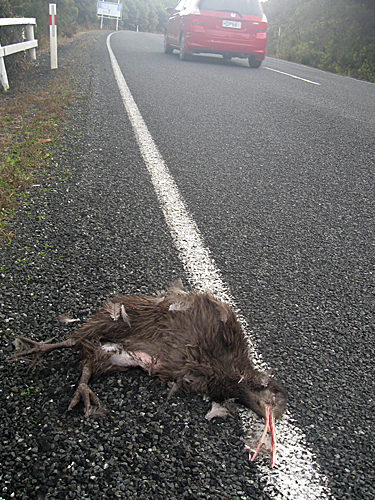2017 July Update
Congratulations
Don McKenzie (Northland Regional Council) has just received the Minister’s NZ Biosecurity Award
https://www.facebook.com/MPIgovtnz/posts/1425369944211444
Don is team leader of the NRC Biosecurity Team. It is great to see him and his team get national recognition – the NRC lead the country in Regional Council Biosecurity work, particularly their support of community driven projects such as Backyard Kiwi.
We are wining! Our Kiwi population keeps increasing.
As outlined last month the annual assessment of our kiwi numbers by using 19 kiwi call listening sites has shown another increase in kiwi numbers at the Whangarei Heads.176 individual males and 91 females were identified compared with 162 males and 100 females last year (females call less so are underrepresented). Because only part of the kiwi habitat at the Heads is covered by listening stations this data translates into an estimated population of 880 based on the same assumptions used in past years. 810 was the estimation for last year. This system of population estimation is only approximate but is the best we have and we use many more stations than most groups to get the best data we can. We have come a long way from a population of approximately 80 kiwi back in 2001!!!!! Well done to all of you!!
Thanks to the listeners who braved the cold nights and difficult conditions to get this data and thanks to Fay Clayton for doing the majority of the data entry – it is big job. Also thanks to the NRC biosecurity team for loaning us electronic kiwi listening devices and analysing the recordings.
New data from this years annual count will be on our website soon
But there are losses
Two kiwi were run over on the same day within metres of each other. One on the morning of 17 July, the second that evening – right next to each other but on opposite sides of the road – just by our kiwi crossing sign (so kiwi can read!).
Both were wild hatched birds (they had no ID chips) – one was 1850g and 117mm bill length (possibly a young female), the other 1450g and 80.4mm (a sub-adult male). The young male may have been looking for the other bird or it may just be coincidence. Thank you to the drivers for letting me know- not a nice thing to happen but we need to know about it. Kiwi rely on their sense of smell and hearing so have very little road sense for a smart bird. The upside is that these kiwi show that our stoat trapping is working (without predator control 95% of kiwi chicks don’t make it to 1000g).
Backyard Kiwi Predator Control Programme :
Our trapping season runs from 1 July 2016 to June 30 2017 and I have totalled our catches for the year :
Ferrets 1, Stoats 17, Weasels 42, Cats 49, Rats 674, Hedgehogs 129 and 72 possums.
The big catch of the season was the large ferret – these guys are capable of devastating kiwi populations because they can kill adult kiwi. It was our first ferret since 2011 and shows that we still need to be ready for them. Stoats are still down – 17 stoats for the year compares with 55 in our first year (2002-2003) and an average of 24 stoats in the years 2003 to 2015. Not only is the trapping working at the Heads I think this reduction in stoats is also a result of the big increase in trapping north and inland from our area thanks to the Kiwi Coast initiative. The occasional controlled pulse of appropriate toxin in strategic areas for secondary poisoning of stoats has also definitely been working to minimise the impact of trap and lure shy stoats.
Weasels are up again following a long upward trend – 42 for 2016-17, our biggest year since the knock down year of 2002-2003 with 46 weasels. The average weasel catch for the 13 years between the knock down year and this season is 23. This increase in weasels is probably due to the reduction in stoat numbers (so another indication that the stoat trapping is working) – stoats prey on weasels. Weasels have a much smaller home range than weasels so to control them completely would require a large increase in the number of traps used – this isn’t justified for kiwi recovery as weasels aren’t a threat to kiwi.
Cats – 49 for this season, our highest tally. The previous 14 year average is 22. Catches have varied from 12 to 49 and this variation in feral cat catches is possibly due to the variation in the number of unwanted cats released each year. I found a box of 5 kittens left on the roadside earlier this year.
Rats – 674, our second biggest year ever for rats after last season’s 765.
As expected this season has started quietly:
Catches for July in the predator traps:
Stoats 0, Weasels 1, Cats 0, Rats 28, Hedgehogs 7 and 2 possums
Controlled 1080 pulse in bait stations
Even the best trapping systems do not catch all the stoats and in fact get less effective after 3-5 years, this is why a controlled pulse of a toxin that will eliminate trap shy stoats through secondary poisoning is crucial. 1080 is by far the most effective and safest toxin to use for this. The Bream Head Conservation Trust is currently doing a pulse at Bream Head and Manaia LC is planning for treatment of Manaia this season too. This will mean a great breeding season for our kiwi and other birds at Whangarei Heads this spring.
What your radio tracked Backyard Kiwi have been up to:
Our breeding males have got down to their 3 month job of incubating eggs.
- Darwin – At the Lamb road quarry in pampas. 11 days nesting 1/8/17 and his activity is down to 4 hours per night.
- Lambert – Usual area at Taurikura Ridge. Nesting in the pampas 23 days nesting as of 21/7/17 and 3.5 hours/night activity.
- Whitu – By the big slip west of the freezing works at Reotahi. He was 36 days into his nest on 28/7/17 and has a nightly activity of 2.5 hours.
- EB – He is beside the intersection of Kerr road and Rarangi Heights. Nesting very close to the road in a pampas bush. At 9 days nesting on 1/8/17 his activity was 4.5 hours..
- Tindall – At the North end of Manaia. His activity is still high – 12.5 hours.
- Pakipaki – Moving between the “Horse paddock” and the Manaia club at McLeods Bay. Activity of 11.5 hours.
- Dudin – He has moved south again and is now in the horse paddock opposite the fire station. Activity 12 hours
ONE program (funded by Kiwis for Kiwi):
I didn’t need to check the ONE dads at Rarewarewa this month but they will also be getting settled into nesting..
Cheers
Todd Hamilton
Backyard Kiwi Project Manager
Whangarei Heads Landcare Forum
M 021 1145 385














